Your cart is currently empty!
Chinese dance–much more than just ribbons & fans

“Those who dance are considered insane by those who can’t hear the music”
In ancient times, yue 樂 referred to both dance and music, although the word is only reserved for music now. Back then, there wasn’t the concept of dance without music (but music performances without dance existed). Legends about the origins of dance can be found in ancient Chinese literature such as the Lüshi Chunqiu (Annals of Lü Buwei), Zhongxiaji (Mid-summer Records), and Guyue (Ancient Music).
With the popularisation of opera in the last 1000 years, ancient Chinese dance as an artform had been on a decline. This was further exacerbated by the widespread adoption of bound feet that greatly limited women’s mobility, rendering them unable to dance. In their places, were male dancers who brought a different aesthetics and Chinese dance was thus performed and passed down through the male body.
It is thus extremely apt that for our upcoming performance, we will be focusing on the 4 ancient beauties who lived in periods before the onset of decline in ancient Chinese Dance and the adoption of bound feet. With the exception of Wang Zhaojun who was not officially known for any particular dance (But she’s known for playing the pipa), all 3 beauties were said to have exceptional dance talents which helped them charm million and above all, the rulers of their times.
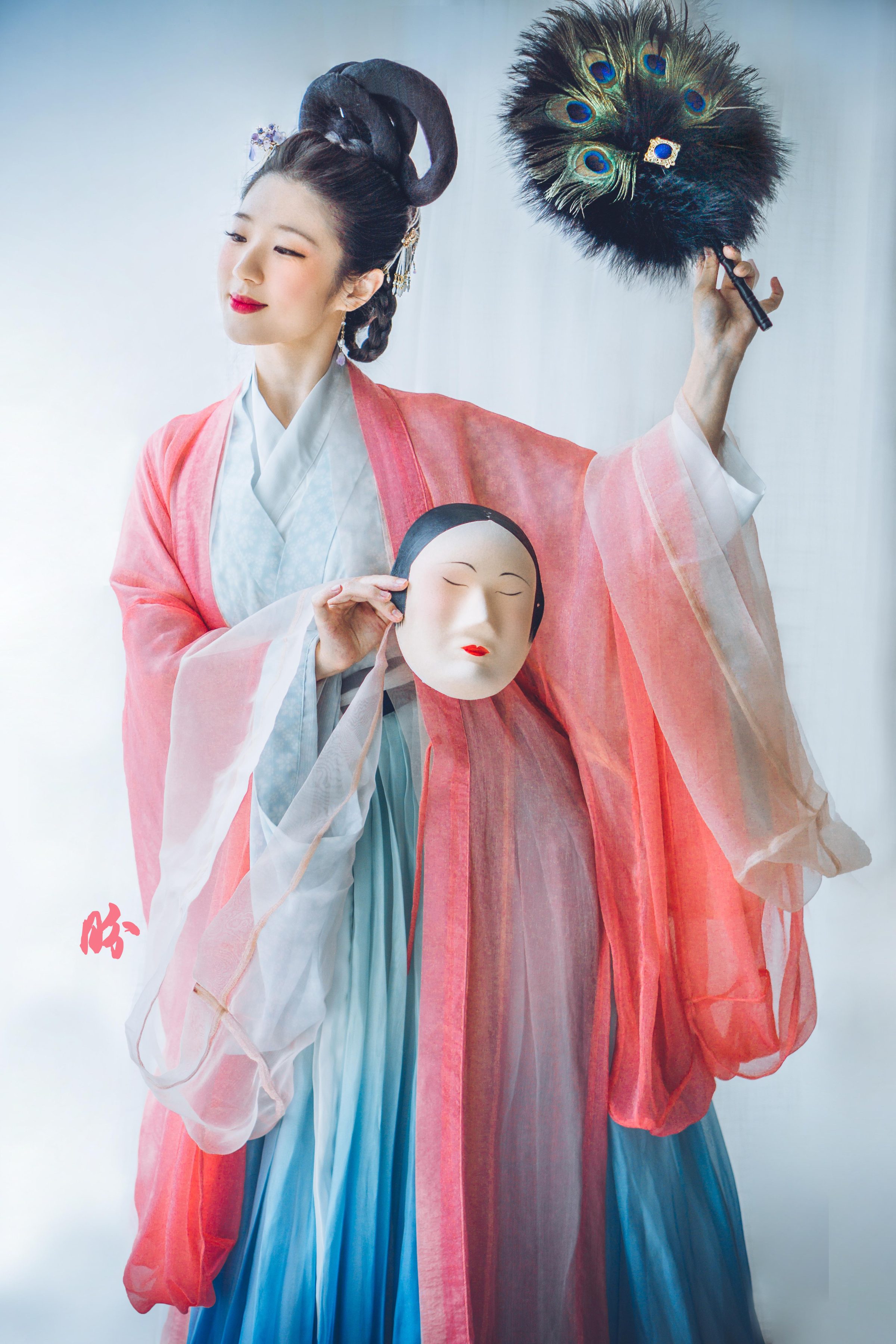
When Elizabeth and I first started working on this project, we were quite sure that it will not be a total re-enactment of the dances because it’s not possible. We could only reimagine them based on the artefacts and whatever was written about them. Also, the kind of music that went along with those ancient dances were all lost too, and we have limited resources and time. So getting new compositions was out of the question.
So I picked a few songs which I felt was representative of my feeling of the periods, the beauties and the stories of those dances they were famous for and worked with Elizabeth on fine-tuning the selection.
Being a nerd, I thought it’s only fair that I share a bit more background information about the dance choreography that Elizabeth has done such a great job in, so her effort and all those ancient knowledge are not gone to waste! Cos personally I find physical theatre and dance the hardest to understand. If you don’t want any spoilers, you can always skip this article and come back after the show to find out more!
Here we go….
Xishi (about 2500 years ago)
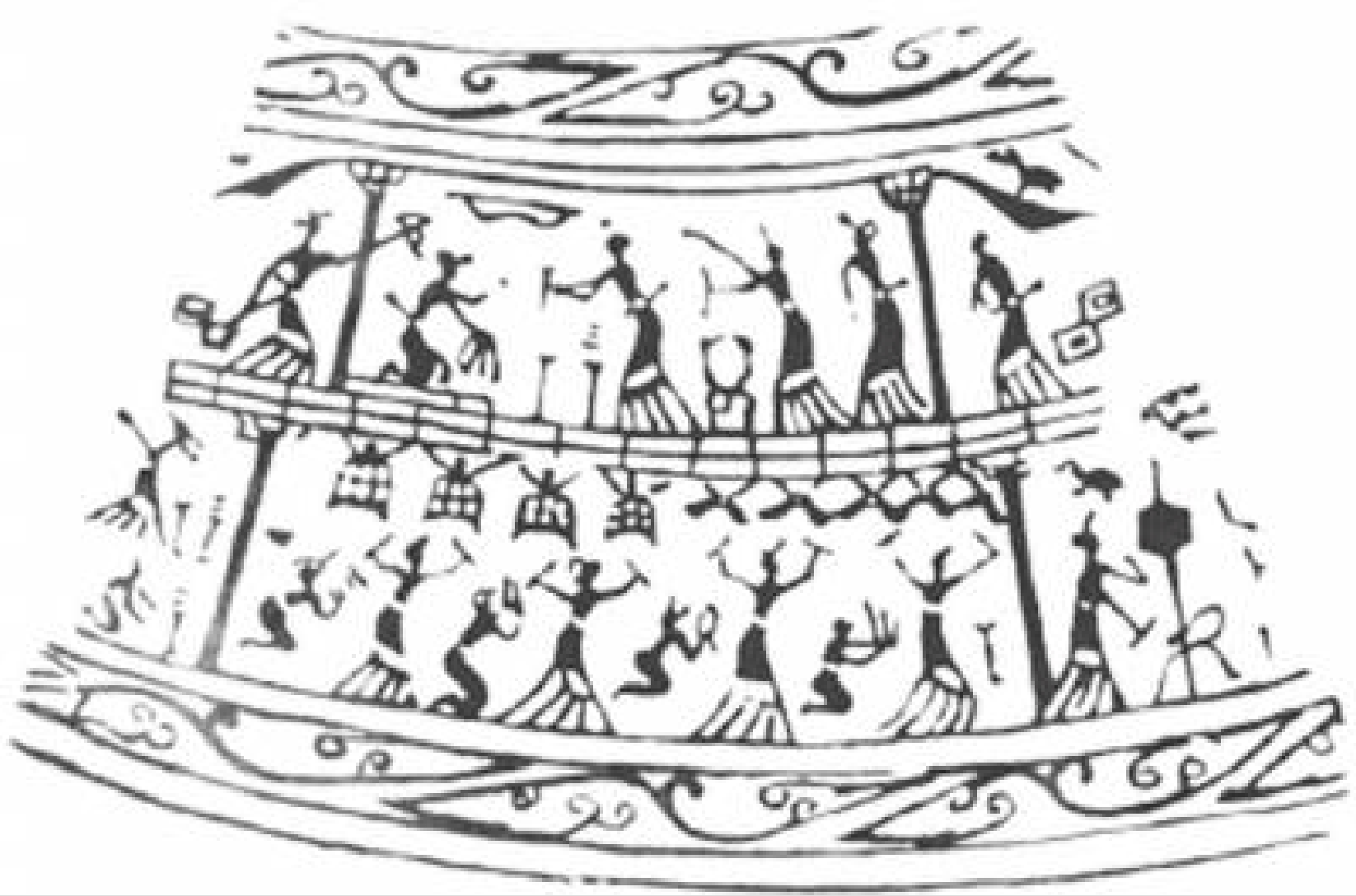
Elizabeth: During the Western Zhou dynasty, the category of Yayue (雅樂), or ‘elegant music’ was established. In it consisted of the Six Major Dances and Six Minor Dances. Yayue was mostly used for official rituals and to reinforce notions of proper decorum. Jiyue (伎樂), or ‘women music’, was more often seen in informal banquets and were often performed by professional dancers of the time. These music and dance pieces took more inspiration from folk music and dance forms and were more entertaining. As such, by the beginning of the Han dynasty, Jiyue gradually became more popular while Yayue declined.
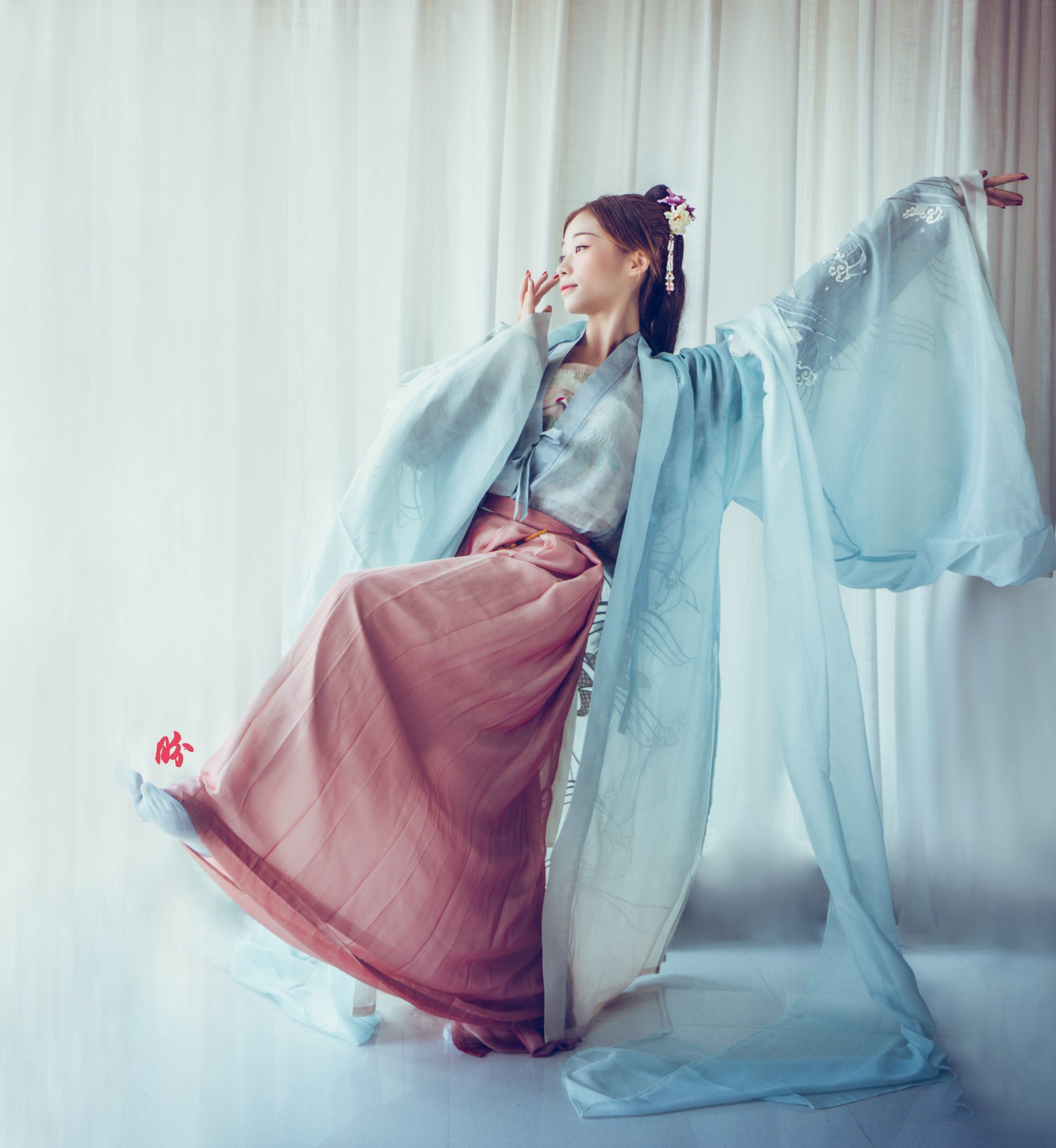
Xishi’s dance was inspired by a modern interpretation《楚腰》(the Chu Waist), choreographed by Chinese choreographer Sun Ying (孙颖老师).
Dance forms in the ancient past were performed with women with ‘natural feet’ (unbound feet). For example, in the Dunhuang Mogao grottoes paintings, we can see that many of the dancers had feet that were sickled in or half pointed, rather than the fully pointed feet common in Chinese dance today.
The fully pointed foot became one of the aesthetic ideals in Chinese dance today due to the influence of ballet line and technique during the institutionalisation of Chinese dance as an official discipline in the 1940s and 50s.
 Hanfugirl: The story of the Chu waist came from a book by an ancient political-philosopher–Han Fei. As with many things in Chinese literature, a spade is never called a spade. The story talks about how the ruler of the Kingdom of Chu loved to see his court officials with tiny waists. So all of them start starving themselves to strive to have the tiniest waist possible, in order to gain his favour. Over time, they all became really frail and could barely stand up straight, let alone provide sound advice to him. Han Fei used this story to caution leaders against favouring policies or people based on his own private and personal preferences, as this would cause the entire political climate to slant towards currying flavouring instead of doing what’s best for the country.
Hanfugirl: The story of the Chu waist came from a book by an ancient political-philosopher–Han Fei. As with many things in Chinese literature, a spade is never called a spade. The story talks about how the ruler of the Kingdom of Chu loved to see his court officials with tiny waists. So all of them start starving themselves to strive to have the tiniest waist possible, in order to gain his favour. Over time, they all became really frail and could barely stand up straight, let alone provide sound advice to him. Han Fei used this story to caution leaders against favouring policies or people based on his own private and personal preferences, as this would cause the entire political climate to slant towards currying flavouring instead of doing what’s best for the country.
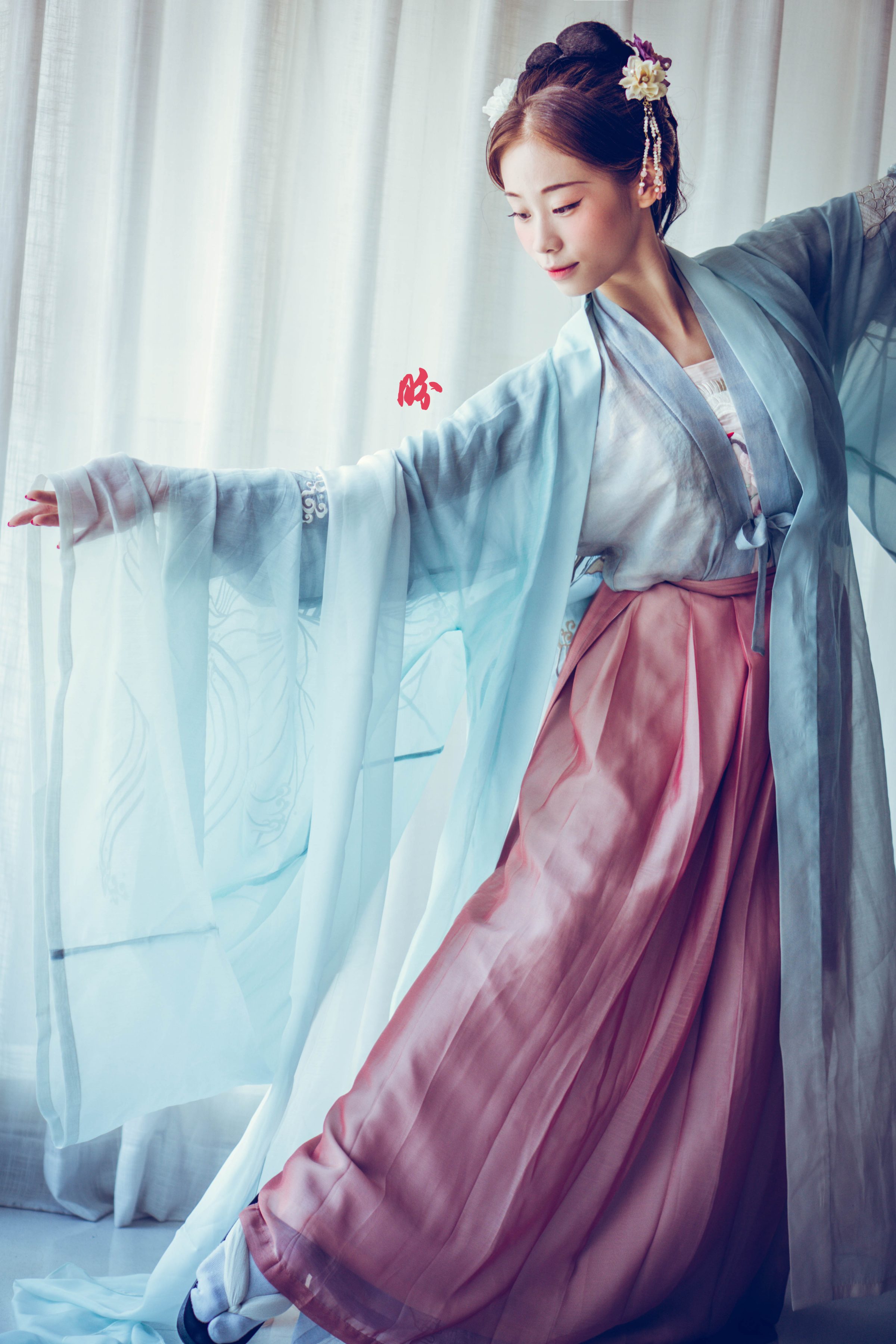 While it was a story, the mention of the tiny waist is likely to be reflective of the existing aesthetics during the period, otherwise the reference would have been lost on the readers. During that period, the wooden clogs were already invented and worn by people like Confucius as well. I had a special request that Xishi wore clogs to dance because she was known for her clog dance. It was said that the king even built a hollow hallway just for her to dance her bell and clog dance. As such, the moves of the dancer would have to be adapted to work around the constraint of the clogs.
While it was a story, the mention of the tiny waist is likely to be reflective of the existing aesthetics during the period, otherwise the reference would have been lost on the readers. During that period, the wooden clogs were already invented and worn by people like Confucius as well. I had a special request that Xishi wore clogs to dance because she was known for her clog dance. It was said that the king even built a hollow hallway just for her to dance her bell and clog dance. As such, the moves of the dancer would have to be adapted to work around the constraint of the clogs.
Zhaojun (about 2000 years ago)
Elizabeth: During the Han dynasty, there was a type of performance called “Variety Shows” (百戏) which existed both in the courts and in folk villages. These performances included wrestling performances, acrobatics, wushu, magic shows, comic performances, as well as music and dance performances. There were many different kinds of dances performed, including silk dance, sleeve dance, drum dance, as well as dances of animals and social dances.

For Zhaojun, I used the sleeve dance, sometimes called the 翘袖折腰 style, which includes making curvy or bendy shapes with the body and the extra-long sleeves.
In the Han dynasty, besides sleeve dances, there were also many plate and drum dances, dances with silk and with the duster (拂尘) and the bell dance.

Hanfugirl: Personally, this is my favourite dance because of how close it is to the artefact and my idea of Han dynasty dance*squeal*. hahahahahah IRONICALLY, Zhaojun is the only one who didn’t have a dancer identity. But I do think that since she’s said to be a concubine of the emperor, she must have known some dance to some extent.
What I also love about this is that her dress is made based on the Western Han tomb in Hunan, and the dancer herself is also from there. Zhaojun in history was from Hubei, which is north to Hunan. In ancient China, this entire region (both Hunan and Hubei) were known to be the kingdom of Chu. So in my wildest imagination, she could be playing/dancing like her ancient relative or some sorts!
Zhaojun’s dance is a more sorrowful, departure dance. She was bidding farewell to her home to a kingdom far far away. Yes, in a cartoon sense of the word, she was marrying a Shrek of her time. But the Shrek proved to be quite a good catch eventually. Still, at this point in the story, she was supposed to be sad and sorrowful.
Diaochan (about 1800 years ago)
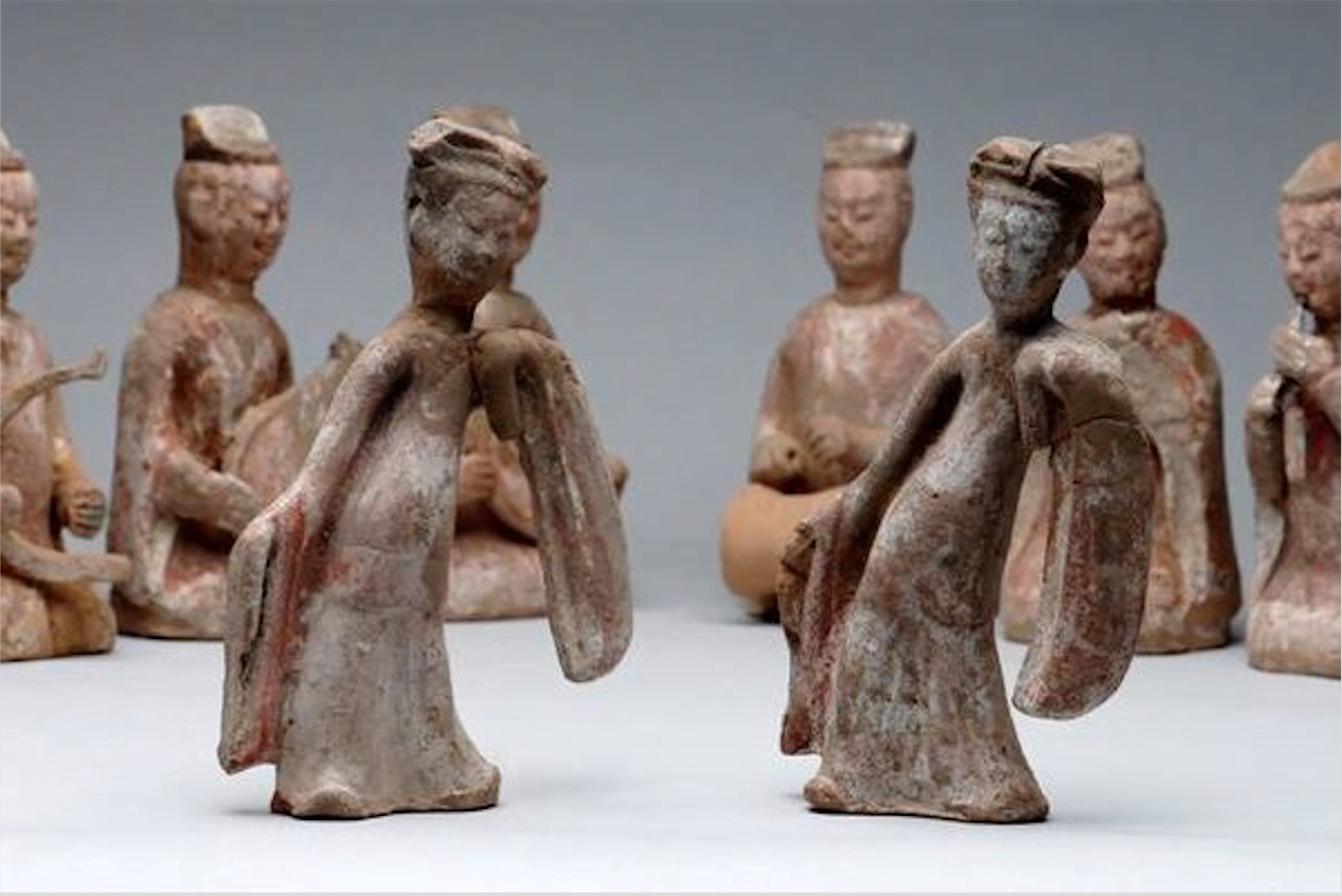 Elizabeth: The period from the three Kingdoms through Wei, Jins, to the Southern and Northern Dynasties, was a time torn by wars, a time of the changing of the dynasties, and a time of shifting nationalities. The main feature of this period was the migration and intermingling of the different peoples’ dances. The dancing system of the Tang dynasty which followed was rooted in this period.
Elizabeth: The period from the three Kingdoms through Wei, Jins, to the Southern and Northern Dynasties, was a time torn by wars, a time of the changing of the dynasties, and a time of shifting nationalities. The main feature of this period was the migration and intermingling of the different peoples’ dances. The dancing system of the Tang dynasty which followed was rooted in this period.
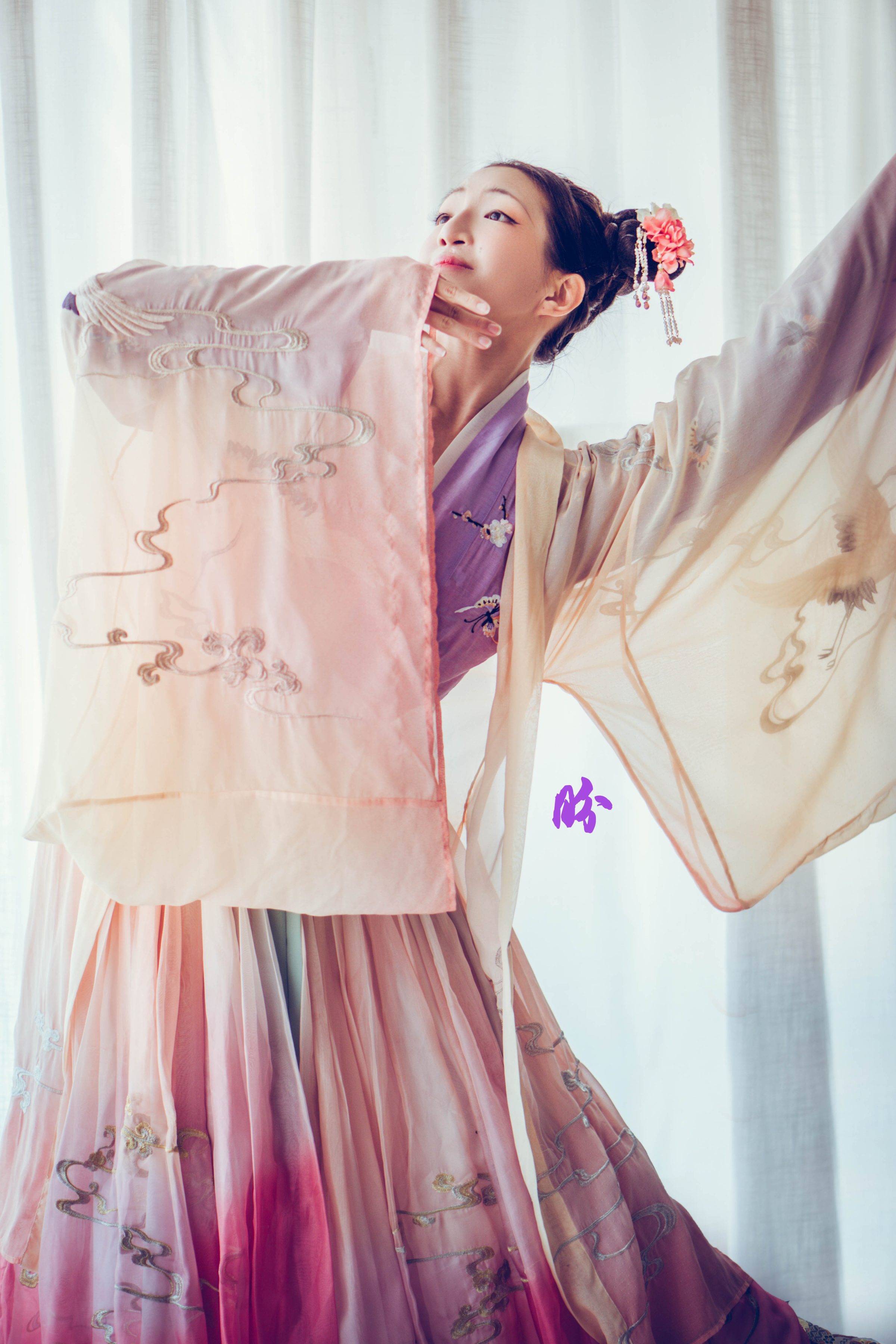
Well-known dance pieces include 《白纻舞》(Dance of white ramie) and 《春江花月夜》(Moonlit night on spring river)which came from the 清商乐 (Qing Shang Yue, a type of music popular amongst the literati of that period). Diaochan’s dance was inspired by 《白紵舞》which was originally a folk dance from the lower-Yangtze area, and took its name from the costumes which were made from white ramie.
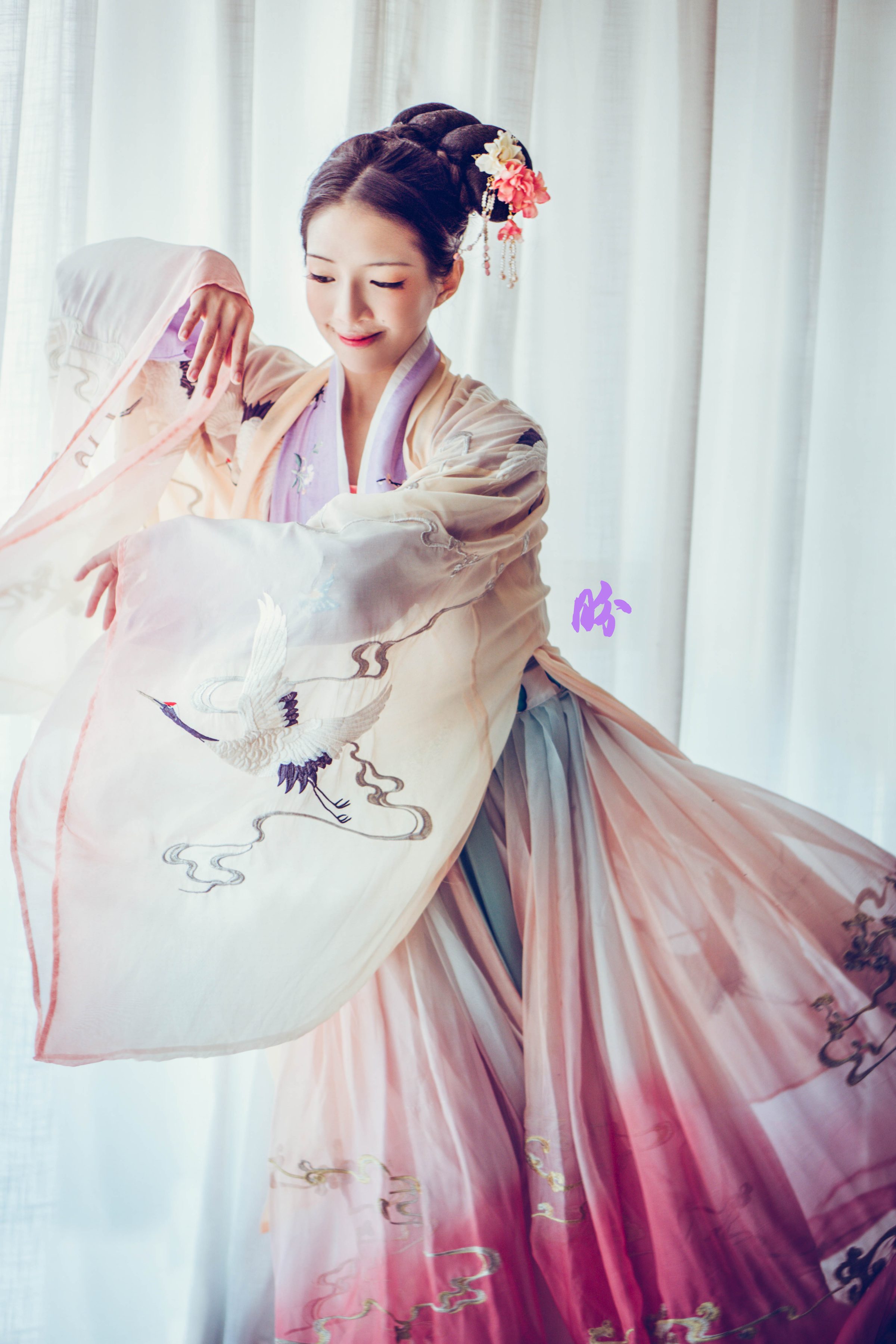
The dance is gentle and light with a stress on dancing with the sleeves. Among the five to six hundred years from the Jin to the Tang dynasty, this dance became a staple repertoire of banquet arts and was one of the dances praised by different poets across dynasties.
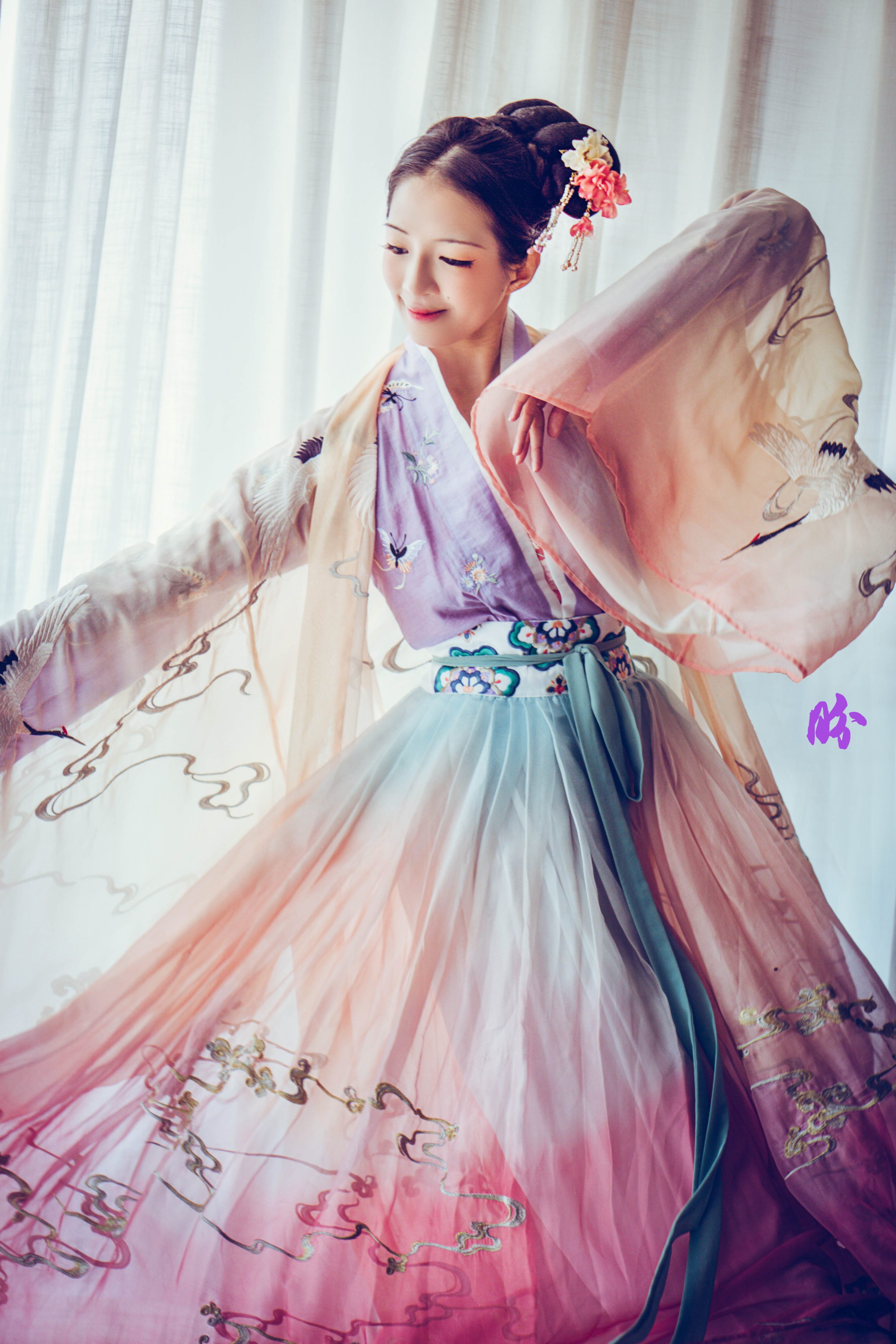
Hanfugirl: The music chosen for this piece is more of a risque, femme fatale feel one because of the story of Diaochan. I wanted to show the seductiveness of Diaochan, and at the same time, the danger that comes with such a two-faced woman. I wonder how the men she was seducing was feeling while watching her dance, and if they would be as captivated as I was when I was taking these pictures.
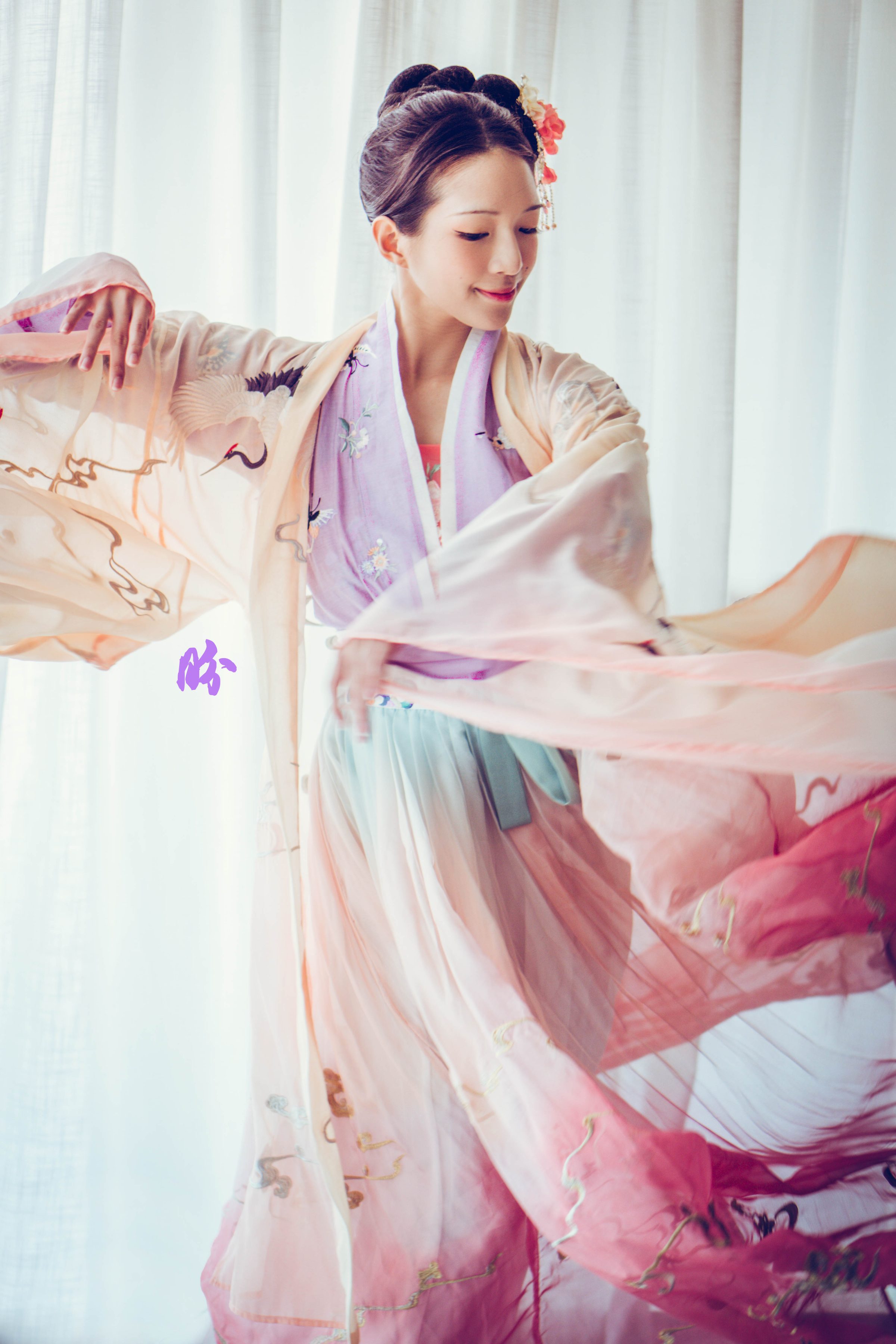
Yang Guifei (about 1300 years ago)
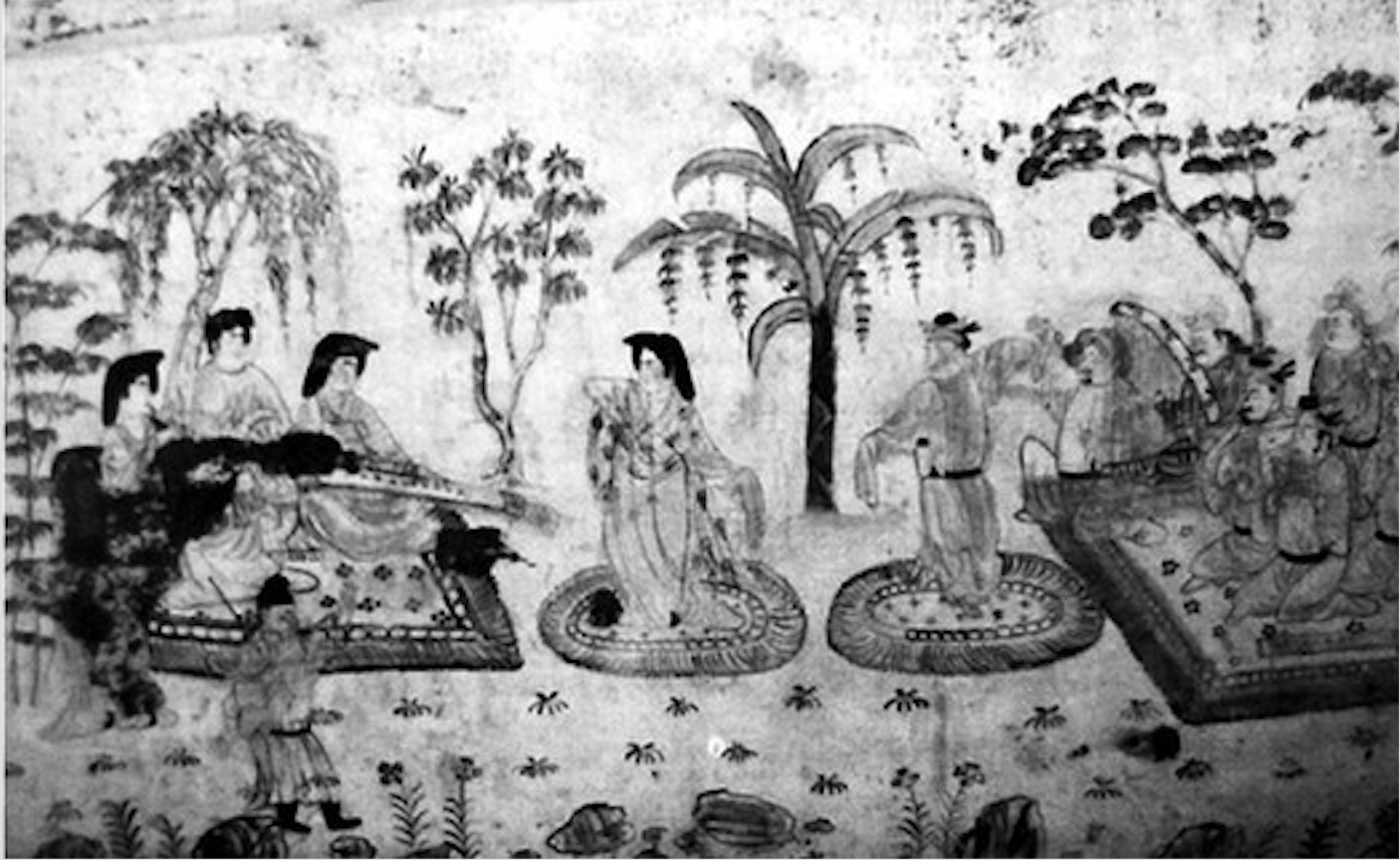 Elizabeth: The Sui dynasty which preceded the Tang was a period of unity, and the rulers amassed the traditional songs and dances of the Han ethnic people, as well as those of minority nationalities and those which had been introduced from abroad.
Elizabeth: The Sui dynasty which preceded the Tang was a period of unity, and the rulers amassed the traditional songs and dances of the Han ethnic people, as well as those of minority nationalities and those which had been introduced from abroad.
The well-known court banquet music, the “Seven Books of Music” and later, the “Nine Books of Music” were founded there. For the first time in Chinese history, the music and dances of different nationalities and of different areas were listed in an equal state as part of court rituals.
Thus, there were many styles of dances in the Tang dynasty: “Nine Books of Music”, “Ten Books of Music”, Zuobu Arts”, “Libu Arts”, Jian and Ruan Dancers, the Folk Song and Dance dramas, the Grand Song and Dance Compositions as well as religious dances.
Yang Yu Huan, or Yang Guifei’s dance was inspired by the Hu style, which was a name given to folk dances from Central Asia or Western regions of China. They have sharp rhythms, with rapid changes to the movements and rich expressions. She was also known for being well-versed in the Dervish Dance from Samarkand.
Today, Hu style influences can be seen in the folk dances of Mongolia and Xinjiang.
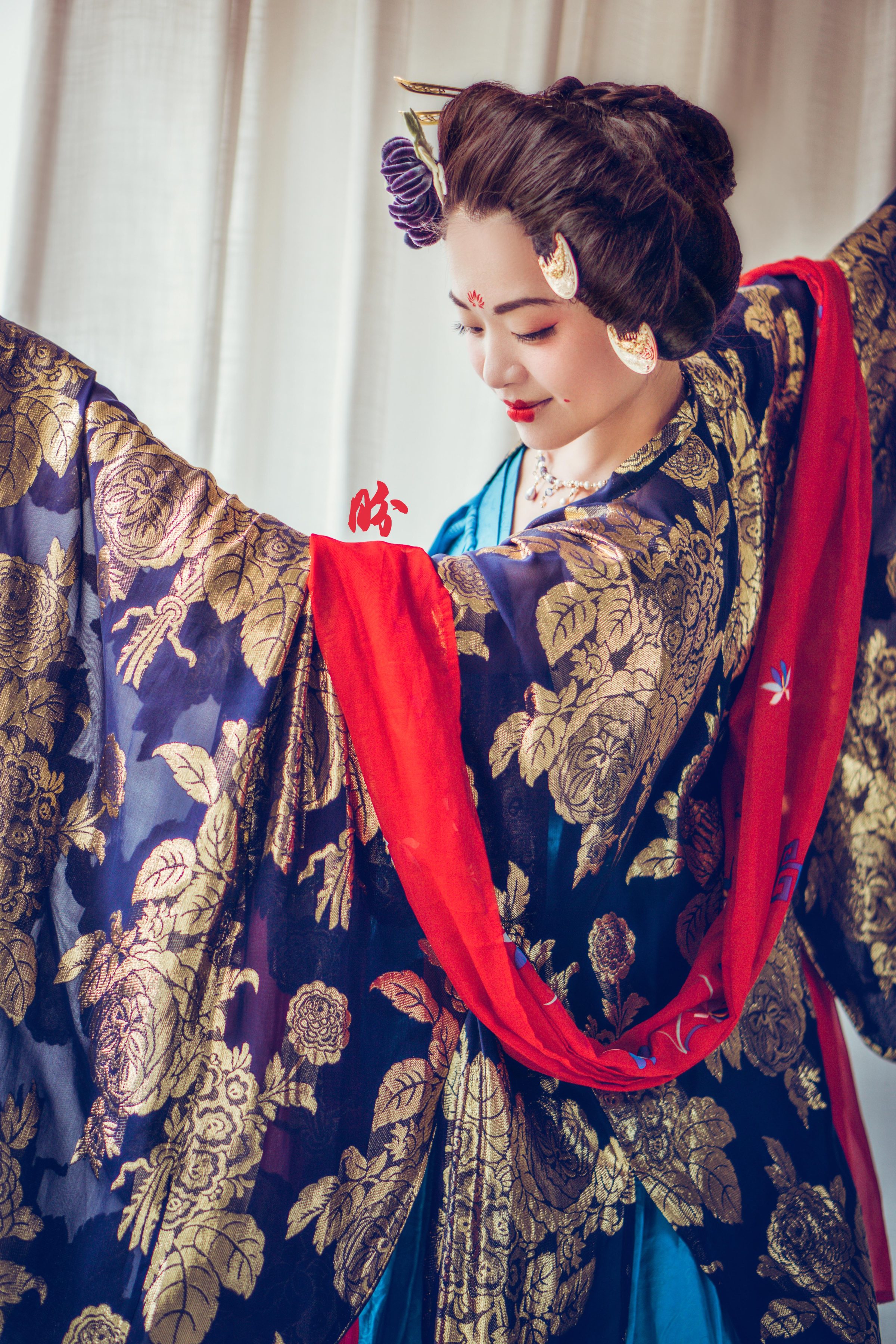
Hanfugirl: I didn’t have the right lighting and space to capture more images which I’m satisfied with but I’m pretty happy with this image because of that Hu (central asian/nomadic tribe) type of shoulder movement and posture. I have ALWAYS been fascinated with the Tang dynasty for its cultural diversity and cosmopolitan society. The well-known Yang Guifei was also said to be one of the most brilliant dancers of her time. There were two dances in particular that were closely associated with her–the Swirling Hu dance (胡旋舞), and the Rainbowed-skirt, feathered-dress dance (霓裳羽衣舞).
The first dance was just a generic type of dance that many Tang dynasty party goers (men and women) would learn and dance (a bit like the clubbing dance of our time).
The second one was a music piece specially recorded and composed by the emperor of that time (also the husband of Guifei). He was inspired by the foreign Hu music composition from India. The music was hailed as one of the gems of Tang dynasty music, and Guifei was said to have danced to it while the emperor played it. After the An Lushan rebellion and death of Guifei, it was never played again.
That particular music doesn’t quite suit the mood and duration of my show, so I found another piece that has a bit more foreign music element for the purpose of performance. And our dancer Serene is an authority in ethnic Chinese dance, so Elizabeth gave her free reign in the parts where ethnic dance influence is to be showcased. So this piece combines both the swirling Hu dance and the Rainbowed-skirt, feathered-dress dance.
This article is jointly written by Hanfugirl and Elizabeth Chan (Dance choreographer).
If you’re interested to watch the performance, which is part of Moonfest 2018, details are as follows:
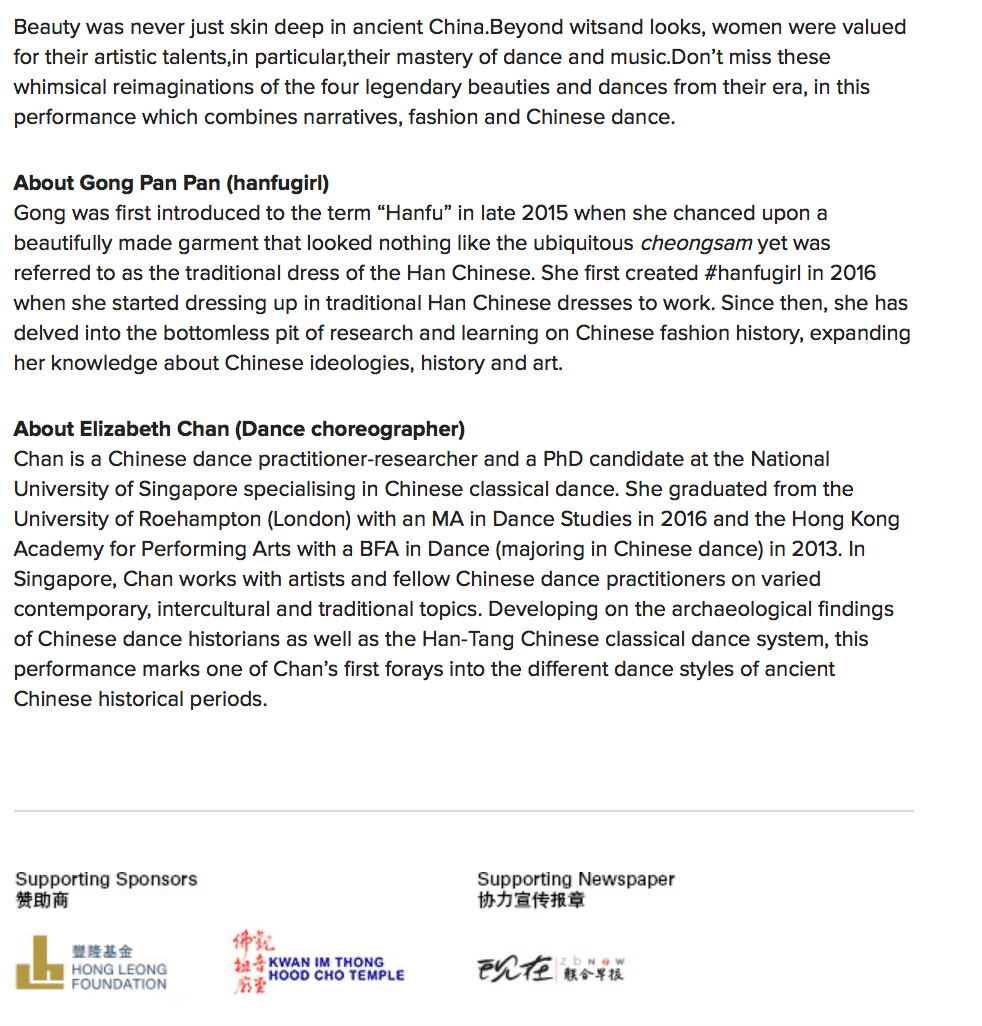
There’re tonnes of other programmes at Moonfest, you may visit the official Esplanade website HERE.
4 responses to “Chinese dance–much more than just ribbons & fans”

A lot of symbolism and history in costumes, dance moves and music, for sure. A Great effort on your part! BRAVO! And may I share this with my readers to enrich their cultural awareness?

Certainly! thank you~!

Reblogged this on By the Mighty Mumford and commented:
THIS IS ALL SO BEAUTIFUL! <3
Very interesting background stories, justo let you know your blog is bookmarked for more detailed reading. The pictures of the costumes are lovely.
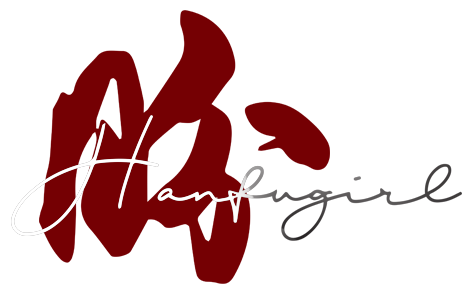
Leave a Reply